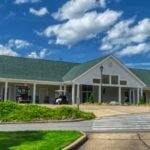By Lloyd Sherman, October 1, 2020
What’s up with real estate in the Village you ask. Well, it’s a mixed bag and a little puzzling to many. The good news is that the sale of existing homes is up 11.7% over last year at this same time. The average selling price and average per square foot cost are also up, which appears to have been positively impacted by the increased number of sales in the $200K to $400K range. So is the increased sales activity a good thing or a bad thing? You decide. Does it mean that more people are moving out? It would certainly appear so, but why? COVID? Getting closer to relatives and family? Fed up? Time for a change? Doesn’t seem to be a theme coming from the real estate community.
Our inventory is extremely low at 78 as of this morning. This trend seems to be happening in several locations across the US. So whatever the reason for house sales being up, there is plenty of demand. I have read several articles that indicate people in high-density cities will be looking for places like Hot Springs Village. So no real answer has presented itself on the volume of sales.
However, the good news appears to be the number of lots sold. 120 so far this year which is more than all of last year. Plenty of building going on and given the low inventory of existing homes, we might be on the verge of a mini-building boom. But wait, will the increased price of lumber impact people’s ability to build? Maybe. We were recently informed that the cost of building materials has increased by 30%.
Like I said at the beginning. It’s a mixed bag and not sure we will have too many concrete answers until the pandemic has run its course. These are interesting times!
Lloyd Sherman
(501) 204-2770
lesherman1948@gmail.com
Hot Springs Village Real Estate First Nine Months Comp – 2020
First-Nine-Months-Comp-2020* * *
Thank you for reading. Be sure to bookmark this website. Click here to visit the Hot Springs Village People Facebook Group.











Gene Garner
10/02/2020 — 8:08 am
Good work Lloyd, interesting numbers that I think will continue to increase. With all the activity in the real estate market it may be time to look at a “transfer fee” on sales of homes and lots. This was tried before by Twiggs but was shot down because of Property Owner and Realtor opposition. But with the obvious need for increased revenue, it starts to make sense.
It would require an amendment to the Declaration with a vote of the Property Owners. By noting the fee would be paid by the buyer the fee would, in effect, become part of the purchase price. This is a common practice of many “gated communities” and helps pay for the investment previous property owners have made in the common properties.
We all know it costs more every day to operate and maintain HSV and we need the extra revenue to cover rising costs. It seems only fair to have new owners help pay for the common properties and amenities that we’ve built and they will use.—Gene
Anne skinner
10/03/2020 — 8:26 pm
Sun City Center Fl has a $2500 transfer fee, up from $1000 12 years ago. It doesn’t stop a sale!
Tom Blakeman
10/04/2020 — 8:14 am
Yes, all of the Sun City retirement communities have a capital buy in / improvement fee. In fact the original Sun City in Phoenix has one which is now over $3000 for any new resident purchasing a property. They implemented it about 20 years ago when they then, like us now, were facing a serious lack of funds to update infrastructure which was then 40 years old and had been neglected. When they implemented the fee in about year 2000 it was around $900 but has grown over the years. Today they have a range of amenities unparalleled anywhere else in the country and their annual assessment fee is less than ours. They also typically now carry something like $25,000,000 in their capital reserve account (thanks to their capital buy in fee) so whenever they have a facility needing a makeover (or need a new something or other) they just do it with cash. And by the way, they have zero daily use fees for their many pools, recreation centers, tennis courts, pickle ball facilities, craft shops, bocce ball, lawn tennis, gyms, etc. and their golf rates are less than here and they have two bowling centers with only very nominal line/game rates. Best of all, they do not subsidize money losing restaurants and their golf program is either break even or cash flow positive every year.
Anyone who wants to know more can just read their story online at their website.
Bryan Morningstar
10/02/2020 — 6:36 pm
Mr. Sherman-
Thank you for the update.
As a person who works very closely with new home builders, the most common theme I hear about HSV is this; the paperwork and red tape is a nightmare and the permit/building fees are not competitive with surrounding cities.
These builders and their trades are coming from Benton, Little Rock and other surrounding areas. Driving to HSV to work every day is not an easy task, as time is money.
Is there a plan for improving the process and money issues to attract more new home builders to our wonderful Village?
Tom Blakeman
10/03/2020 — 1:19 pm
Great work Lloyd. We need regular data like this. Also very valid and timely ideas and comments by Gene and Bryan.
A couple further thoughts:
1. Making the fee a “capital improvement contribution” and having the funds channeled into a capital improvement account (not for operations expenses) might sound and be better. And after a person contributes once per residence, further buys and sells (to simply relocate within the Village) don’t get dinged again. There would also need to be a policy on how to handle investors. Gene is exactly correct that almost all retirement, resort and gated communities with significant amenities do some form of this. And, they have been doing so for a long time.
2. As to the permit fees we need to think about waiving all or part of the current fees to encourage more new construction, especially for the lower price point homes. This is the same concept as most states, counties and cities which offer “tax incentives” to companies which relocate there or bring new capital investments. Bryan’s comment about the fees and red tape have been getting noted for some time now but it appears no corrective action has been taken.
Gene Garner
10/04/2020 — 7:38 am
Tom’s correct when he states {“Making the fee a capital improvement contribution” and having the funds channeled into a capital improvement account (not for operations expenses) might sound and be better.}. In fact it’s required by AR statute, Arkansas Code Annotated 18-12-107.
ACA 18-12-107 Transfer fee covenants prohibited-Definitions
(a)(B) (5)(C) “Transfer fee covenant” does not include a provision:
(iii) Of a document requiring payment of a fee or charge to an association to be used exclusively for the purposes authorized in the document, as long as no portion of the fee is required to be passed through to a third party designated or identified by description in the document or another document referenced in the document;
In other words if the Declaration requires the payment of a fee to the POA when transferring real property and defines the use of that money (not to a third party) it’s not a “transfer fee covenant”. Of course this would have to be approved by legal counsel—Gene
Lloyd E Sherman
10/05/2020 — 11:13 am
Thank you for the comments especially, from Gene, Bryan, and Tom. I will take these comments into our upcoming Information Sharing Session to discuss goals and objectives for 2021. Somewhere along the way it seems I have been told that transfer fees are illegal in the state of Arkansas, but should that concept get some traction, we will get a reading from the attorneys. Tucker has been working on the fee structure for building permits. Fee setting is being addressed as part of the budgeting process.
Gene Garner
10/12/2020 — 5:46 pm
Lloyd, a “transfer fee covenant” is illegal in AR unless it’s authorized in the Declaration and designated to be used for a specific purpose. It would take a vote of the Property Owners to change the Declaration. Many HOA/POAs have a transfer fee in their governing documents to help offset rising costs.—Gene